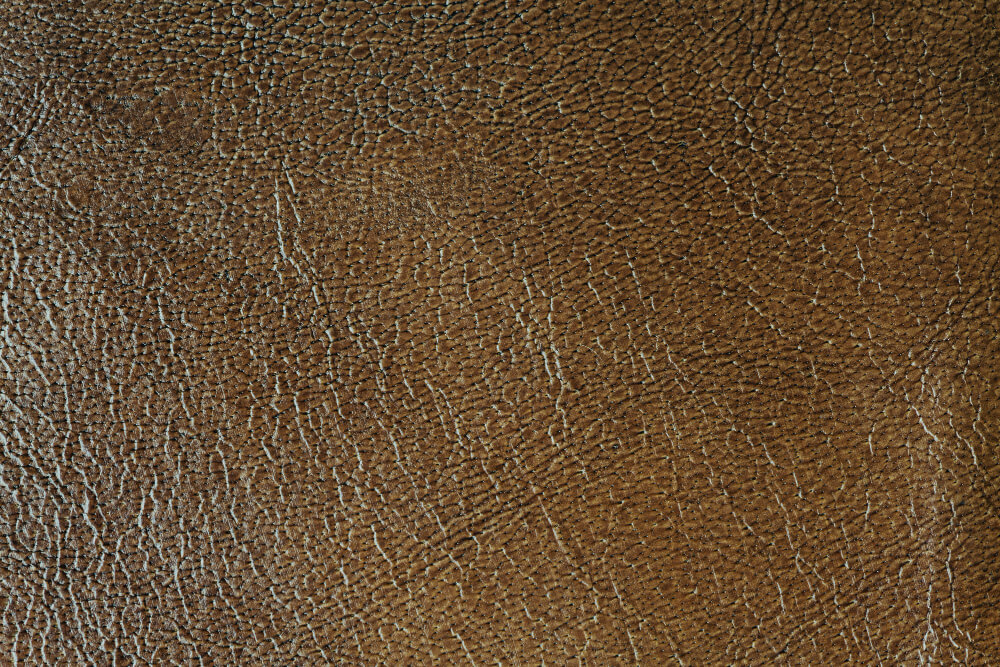Does Real Leather Peel?
It’s a moment of real frustration. You’re looking at your favorite leather jacket, a comfy sofa, or a trusted bag, and you see it: that dreaded flaking and peeling. It looks cheap, it’s messy, and it makes you wonder, “Did I get tricked?”
So, let’s tackle the big question head-on: Does real leather peel?
I want you to take a deep breath and remember this one simple fact, because it will change how you shop forever:
Genuine, high-quality leather does not peel.
What you’re actually seeing is not the leather itself, but a plastic coating flaking off a lower-quality material. It’s a classic case of mistaken identity! Think of it this way: real leather is a natural, durable hide, much like your own skin. It might get a scratch, develop a wrinkle, or gain a unique patina as it ages, but it doesn’t just flake away in layers.
The confusion usually comes from not knowing that there are different grades of leather. The term “real leather” is often used to describe everything from the absolute best to the very worst. The peeling problem is almost always a sign of two specific things:
Bonded Leather: This is the biggest culprit. Imagine taking paper scraps and glue, mashing them into a sheet, and then painting it to look like wood. That’s bonded leather. It’s a mix of shredded leather fibers and plastic, and that top plastic layer is what inevitably peels.
Heavily-Coated “Genuine Leather”: This is where it gets tricky. Even lower-grade real leather is often sanded down and hidden under a thick plastic (polyurethane) coating to make it look perfect. This coating is what fails, leading to the genuine leather peel that surprises so many people.
So, if your item is peeling, don’t blame the leather blame the plastic mask it was wearing. True, high quality leather is built to last a lifetime, aging with character and grace, not crumbling apart.
Why Is My Leather Peeling? The Science of Fake vs. Real
So, if quality leather doesn’t peel, what’s happening? The secret is in a trick called the “corrected grain.”
Imagine a piece of leather with lots of scars. Instead of wasting it, manufacturers sand it smooth and spray on a plastic (polyurethane) layer to make it look perfect. This coating is cheap and looks good initially, but it’s the real villain.
The ‘Corrected Grain’ Con
With time and use, this plastic topcoat becomes brittle. Every time you bend your sofa or bag, it cracks a tiny bit. Eventually, these cracks grow, and the plastic film starts to separate and peel away from the base layer.
This is why you might see genuine leather peel. The term “genuine leather” legally means it contains leather, but it’s often this lowest-grade, heavily coated type.
Then there’s bonded leather. Think of it as the “particle board” of the leather world. It’s made from leftover leather dust glued together and covered with a thick plastic coating to look uniform. This material is designed to be cheap, not durable, and its peeling is guaranteed.
Leather Types Decoded: A Simple Guide to What Peels
To avoid future frustration, you need to know your leather grades. Here’s a simple guide:
Full-Grain Leather: The best. It’s the top layer of the hide, left untouched with all its natural marks. It ages beautifully and never peels.
Top-Grain Leather: The second-best. It’s lightly sanded and finished for a more uniform look but with a high-quality coating. It’s durable and very unlikely to peel.
Genuine Leather: The bottom of the real leather barrel. It’s heavily processed and coated, making it the most common source of peeling “real” leather.
Bonded Leather: Contains some leather fibers but is mostly glue and plastic. It will always peel and has a short lifespan.
Faux / PU Leather: 100% plastic. It will always peel and crack over time.
The key takeaway? For a long-lasting item that won’t peel, look for full-grain or top-grain leather.
How to Identify Real Leather: 3 DIY Tests You Can Do Now
Don’t get fooled again. Before you buy, try these three easy tests to tell if leather is real or fake.
The Look & Feel Test: Real leather has unique, imperfect patterns and feels soft and warm. Fake leather looks perfectly uniform and feels cool or plasticky.
The Smell Test: This is a dead giveaway. Real leather has a rich, pleasant, and distinctive smell. Fake leather smells like chemicals or nothing at all.
The Water Test: Put a tiny drop of water on the surface. On real leather, the water will soak in and darken the spot. On fake leather, the water will bead up on top, unable to penetrate the plastic layer.
Using these tests will give you the confidence to spot quality and avoid peeling leather down the road.
How to Fix Peeling Leather: A Step-by-Step Repair Guide
Found peeling? Don’t panic. Here’s a practical guide on how to fix peeling leather.
First, assess the damage. Is it a small spot or is it flaking everywhere? Small areas might be manageable, but widespread peeling is often a sign the item is beyond economic repair.
For a quick DIY fix:
You can carefully apply a tiny drop of strong leather glue under the peeling film and press it down firmly. Wipe away any excess and place a heavy book on top until it dries. Be aware, this is usually a temporary solution.
For a valuable item:
If it’s a cherished bag or car seat, your best bet is a leather repair professional. They can sometimes recolor and reseal the area, but this can be costly. Often, with heavily bonded leather, a proper fix isn’t possible, as the material itself is failing.
Smart Buyer’s Guide: How to Never Buy Peeling Leather Again
The best strategy is to avoid the problem altogether. Become a savvy shopper with this simple advice.
Watch out for these red flag phrases on labels:
“Genuine Leather” – Often means low-grade, coated leather.
“Bonded Leather” – Will definitely peel.
“PU Leather” or “Faux Leather” – You are buying plastic.
“Leather-Finished” – Only the surface looks like leather.
To ensure you get a quality product that will last, always look for full-grain or top-grain leather. These are the best leather types that don’t peel. While they cost more upfront, they age beautifully and will save you money and frustration in the long run. Remember, if the price seems too good to be true, it probably is.


